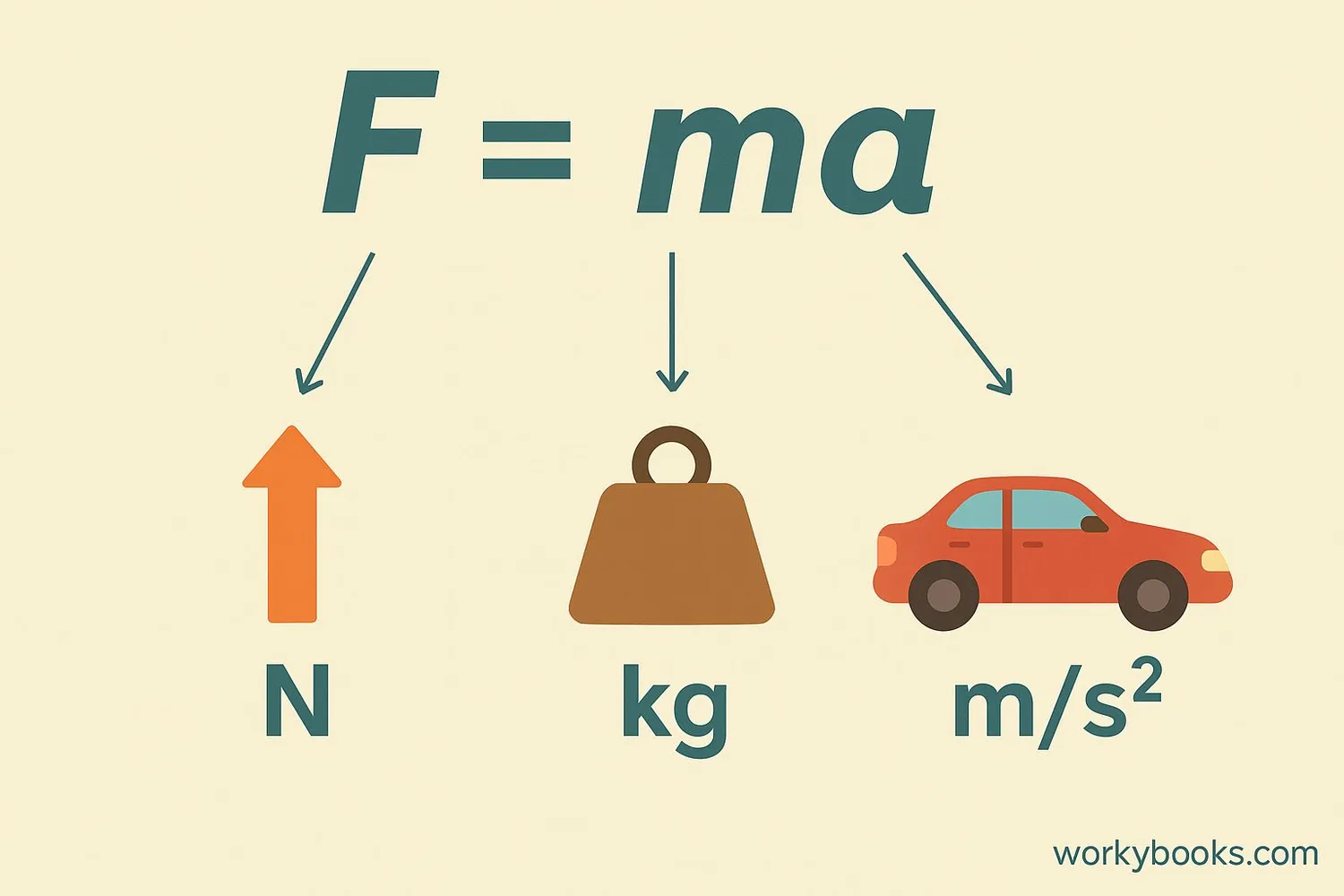Newton's Second Law - Definition, Examples, Quiz, FAQ, Trivia
Understand how force, mass, and acceleration work together
What is Newton's Second Law?

Newton's Second Law of Motion explains how force, mass, and acceleration are related. It tells us that the acceleration of an object depends on two things:
• The net force acting on the object (the total force after considering all pushes and pulls)
• The mass of the object (how much "stuff" it contains)
In simple terms: The harder you push something, the faster it moves (if the mass stays the same). But the more massive something is, the harder you have to push to get it moving at the same speed.
Key Concept
Acceleration is directly proportional to force (more force = more acceleration) and inversely proportional to mass (more mass = less acceleration).
The Mathematical Formula

Newton's Second Law can be expressed with a simple but powerful mathematical formula:
F = m × a
This means:
• Force (F) is measured in Newtons (N)
• Mass (m) is measured in kilograms (kg)
• Acceleration (a) is measured in meters per second squared (m/s²)
The formula shows that if you increase the force while keeping the mass the same, the acceleration increases. If you increase the mass while keeping the force the same, the acceleration decreases.
Force
A push or pull on an object (measured in Newtons)
Mass
Amount of matter in an object (measured in kilograms)
Acceleration
How quickly velocity changes (measured in m/s²)
Did You Know?
One Newton is the force needed to accelerate 1 kilogram of mass at 1 meter per second squared (about the force of a small apple's weight).
Real-World Examples

Newton's Second Law is at work all around us every day. Here are some common examples:
Rocket Launch
The enormous force from rocket engines accelerates the massive rocket upward (F=ma)
Car Acceleration
Pressing the gas pedal increases force, making the car accelerate faster
Shopping Cart
An empty cart accelerates easily, while a full cart (more mass) needs more force
Other examples include:
• Sports: Kicking a soccer ball - harder kick (more force) makes the ball accelerate faster
• Bicycle: Pedaling harder makes you accelerate faster
• Baseball: A heavier bat (more mass) requires more force to swing at the same speed
• Elevator: You feel heavier when it accelerates upward (increased force)
Knowledge Check
Test your understanding of Newton's Second Law with these questions:
Frequently Asked Questions
Common questions about Newton's Second Law:
Physics Trivia
Amazing facts about Newton's Second Law and motion:
Rocket Science
The Saturn V rocket that took astronauts to the moon produced 34.5 million Newtons of thrust at liftoff to accelerate its 2.8 million kg mass!
Sports Physics
A professional baseball player's swing applies about 8,000 Newtons of force to the ball, accelerating it from 0 to 160 km/h in less than 0.1 seconds!
Animal Athletes
The tiny flea is one of nature's best examples of Newton's Second Law - it can accelerate at 200 m/s² (20 times human tolerance) to jump 200 times its body length!
Force Measurement
The world's most accurate force sensor can measure down to 0.0000000001 Newtons - about the weight of a single red blood cell!


